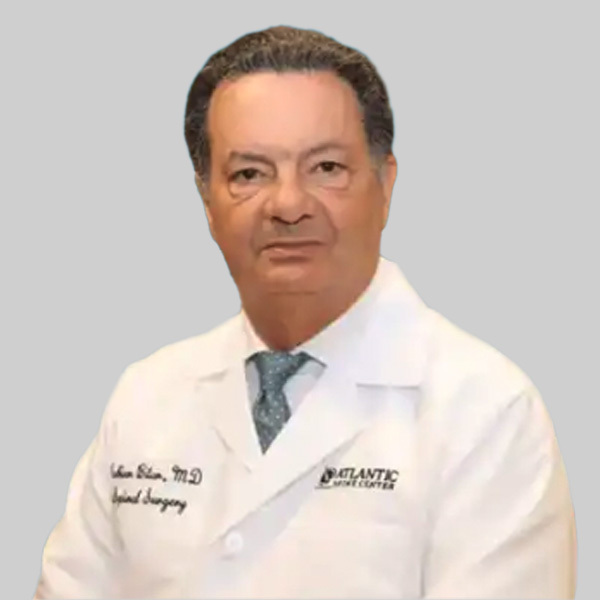Arthritis is an inflammatory condition that affects the joints. There are several types of arthritis, the most common of which is osteoarthritis or wear-and-tear arthritis.
SYMPTOMS
The common symptoms of arthritis/ osteoarthritis include:
- Joint pain that often gets worse after exercise or excessive pressure on the joint
- Joint stiffness, particularly in the morning
- Cracking or grinding noise with joint movement
- Decreased function of the joint
CAUSES & RISK FACTORS
Arthritis is often seen in people over 40, but it can affect anyone. The most common cause is wear-and-tear, and as you age, you are more prone to develop arthritis. Traumatic injuries, fractures, and joint dislocation also make you more susceptible to arthritis. Certain types of arthritis are more common in women than men, such as thumb arthritis.
Some people have congenital abnormalities of the joints, such as Perthes’ disease of the hips, that cause early degeneration and subsequently osteoarthritis.

THE MOST COMMON TYPES OF ARTHRITIS:
Osteoarthritis:
Osteoarthritis is also called as degenerative joint disease; this is the most common type of arthritis, which occurs often in older people. This disease affects cartilage, the tissue that cushions and protects the ends of bones in a joint. With osteoarthritis, the cartilage starts to wear away over time. In extreme cases, the cartilage can completely wear away, leaving nothing to protect the bones in a joint, causing bone-on-bone contact. Bones may also bulge, or stick out at the end of a joint, called a bone spur. Osteoarthritis causes joint pain and can limit a person’s normal range of motion (the ability to freely move and bend a joint). When severe, the joint may lose all movement, causing a person to become disabled. Disability most often happens when the disease affects the spine, knees, and hips.
Rheumatoid Arthritis:
This is an auto-immune disease in which the body’s immune system (the body’s way of fighting infection) attacks healthy joints, tissues, and organs. Occurring most often in women of childbearing age (15-44), this disease inflames the lining (or synovium) of joints. It can cause pain, stiffness, swelling, and loss of function in joints. When severe, rheumatoid arthritis can deform, or change, a joint. For example, the joints in a person’s finger can become deformed, causing the finger to bend or curve. Rheumatoid Arthritis affects mostly joints of the hands and feet and tends to be symmetrical. This means the disease affects the same joints on both sides of the body at the same time and with the same symptoms. No other form of arthritis is symmetrical. About two to three times as many women as men have this disease.
Post-Traumatic Arthritis:
Arthritis developing following an injury to hand, wrist or elbow is called as post-traumatic arthritis. The condition may develop years after the trauma such as a fracture, severe sprain, or ligament tears.
Psoriatic Arthritis:
This form of Arthritis occurs in some persons with psoriasis, a scaling skin disorder, affecting the joints at the ends of the fingers and toes. It can also cause changes in the fingernails and toenails. Back pain may occur if the spine is involved.
DIAGNOSIS
Doctors diagnose osteoarthritis with medical history, a physical exam, and x-rays of the affected joint. During the physical examination, your doctor will examine the affected joint for swelling, pain, tenderness, and range of motion. An X-ray of the affected joint may show a loss of the joint space and bone spur formation.
CONSERVATIVE TREATMENT OPTIONS
There are several treatments and lifestyle modifications that can help ease your pain and other symptoms.
- Medications: Pain-relieving medications such as NSAIDs, COX-2 inhibitors, and opioids may be prescribed. Topical medications such as ointments can be applied over the skin where there is pain. If pain is very severe, corticosteroid injection can be given directly into the affected joint.
- Other Treatments: Your physiotherapist will teach you exercises to keep joints flexible and improve muscle strength. Heat/cold therapy, which involves applying heat or cold packs to the joints, provides temporary pain relief. Lifestyle modifications can be done to control weight and avoid extra stress on the weight-bearing joints.
SURGERY
Joint replacement surgery is considered as an option when the pain is so severe that it affects your ability to carry out normal activities.
_________________________________
EXPERIENCING PAIN? DO YOU HAVE AN INJURY?
Our Specialists are here to help.
Book an appointment with NYC’s best orthopedic specialists to discuss your condition. Fill out the form below and you will receive a call from our office within 5-10 minutes. We’ll book an appointment at a time and location that work for you, and send you a reminder by email.










